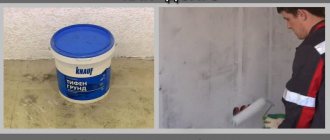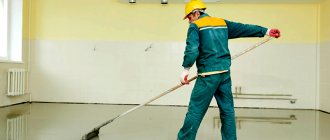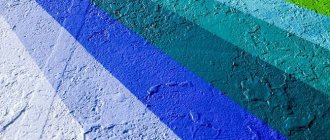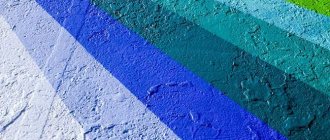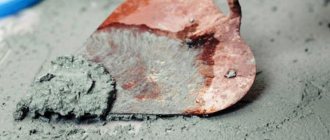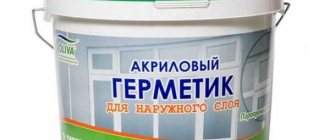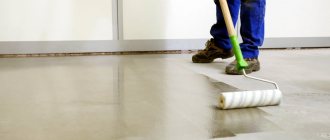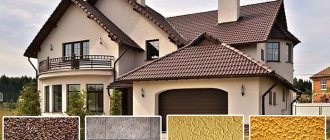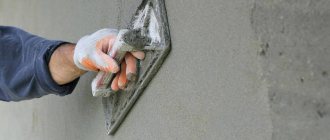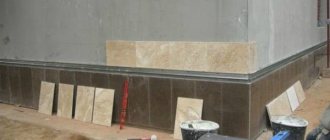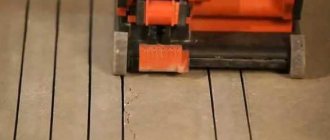Cladding a building is an important stage of construction; it can serve not only for decorative purposes, but also become a protective agent. Facade paint for plaster for exterior work copes with these requests. The main thing is to select the right products, then the coating will last a long time. The features of this paint and varnish material will be discussed in detail below.
What are façade paints for plaster?
Before buying paint for the facade of a house on plaster, you should pay attention to the properties declared by the manufacturer. They are responsible for the reliability and stability of the resulting layer. A good product will create a layer that will withstand the surrounding elements.
Paint for external plaster work helps to obtain a beautiful external design of the structure, protecting the plaster layer from moisture, wind and other weather conditions. These products are produced in many colors, which allows you to choose the appropriate option to suit your taste.
A good product will create a layer that will withstand the surrounding elements.
Painting the outside of the house. How and how to paint the outside walls of a house, basic rules
Painting the outside of the house. How and how to paint the outside walls of a house, basic rules
If the surface of the external walls is free of depressions, cracks and other defects, but there is a need to update the façade of the house, then painting is a suitable option.
This will change the appearance of the native nest and add brightness to the area. In addition, this finishing method will help protect the supporting structure from premature destruction.
Comparison of finishes
To decorate the walls outside, not only paint is used. There are other ways to update the facade. In the process of choosing a finish, they are guided by the condition of the supporting structure, the service life, the ease of performing the work, and even the technical characteristics of the materials.
- Painting allows you to quickly, inexpensively, and do it yourself to update the façade of your home. At the same time, the service life of the finish is not long and depends on the type of paint chosen. The paint hides small defects on the facade. Protects walls from external negative factors.
- Siding – this option is a little more expensive than the previous one, but also not very expensive. The installation process is simple, and the average person can do it on their own by reading a few installation guides. The finish is not durable and is damaged by impacts. The facade is completely hidden under the material. Service life is about 20 years.
- A block house is suitable for cladding an old wooden house that has lost its attractiveness. The material looks like an imitation of a rounded log, so it perfectly matches the texture of wood. Installation of such cladding is complex and anyone can do it on their own. It costs more than siding, but will last significantly without updating the protective layer.
- Brickwork is a very complex method of finishing a facade. An additional foundation is made as a base, and only a professional worker can make the decorative wall smooth and beautiful. The cost of repair work is high, but the facade will last without changes for more than 50 years.
- Porcelain tiles or other ceramic tiles. It will be difficult to cope with this type of house cladding on your own. It is better to use the services of specialists. The facade will last more than 50 years and will reliably protect the main structure from any influences. Of course, you will have to pay a lot for such pleasure.
Painting the outside of the house using plaster. Types of facade paints
Acrylic paints are optimal for outdoor work.
Before you decide how to paint the outside of a plastered house, you should learn a little more about what the building materials market offers today.
- Facade silicate paints. They are based on silicate glue (liquid glass), and the composition is complemented by filler and natural pigments. Plaster painting of external walls will last for at least 20 years. The painted layer is vapor-proof, resistant to ultraviolet radiation and acidic environments.
Note! Disadvantages include poor abrasion resistance and frequent crack formation. The latter occurs due to the zero elasticity of the layer, which is deformed due to thermal expansion. As a result, the owner often observes a network of small cracks on the walls.
Lime based paint.
- Compositions based on slaked lime. They perfectly transmit steam coming from inside the room. Fungus will never settle on the walls due to the bactericidal properties of lime. This type of exterior painting of a house over plaster also has disadvantages - it gets dirty easily, is washed off by precipitation, and is poor in color range. White and pale, pastel colors - that’s the whole poor palette.
- Cement facade paints. The base is made of white Portland cement, with the addition of pigment substances, creating a mixture similar to lime. Moreover, although paints are more resistant to moisture, they are not protected from mold and fungal growths. Therefore, even the low price of the material does not add to it the special popularity that more modern analogues can boast of.
- Acrylic compositions. Reasonable cost and modern components providing decent performance have placed the material among the leaders. Most varieties are made on the basis of water, but there are analogues using organic solvents.
Before painting the exterior of the plaster, pay attention to its strength. For heavily worn facades, where the plaster is unreliable, solvent-based options are desirable.
The paint is less vapor permeable than silicate paint, but has better abrasion resistance. Durability and the ability to mask minor defects and cracks on the surface add advantages.
Features of silicone dye.
- Silicone paints for exterior use. It is generally accepted that this option is one of the best. The attached instructions justifiably promise a whole list of advantages.
The coating will become hydrophobic, which means that precipitation and condensation from fog will not be absorbed into the walls, but will flow down. At the same time, vapor permeability will be maintained, which is very important for the microclimate in the house. Micropores formed in the painted layer will not create an obstacle to diffusion.
Adhesion to almost all types of plasters can be called ideal. Ultraviolet radiation and temperature differences do not affect the paint in any way. Dust will not be attracted due to the inability of the façade to become electrified.
The disadvantages include the highest cost compared to previous types, and slightly less elasticity than acrylic paints.
How to paint a fur coat on the house. What is decorating a house with a fur coat and why is it attractive?
Finishing the facade of a house with a fur coat got its name due to its external similarity to the fur located on the inside of a sheepskin coat, and therefore, when talking about this method of finishing the facade, they do not mean plush fur, but cladding with plaster, visually reminiscent of its texture. It is important to understand that, in fact, “fur coat” is one of the types of plaster that involves applying sand-cement mortar by spraying onto the surface of the wall. Throwing or spraying the solution onto the surface to be treated allows you to achieve the roughness effect characteristic of a fur coat. Before you start purchasing materials to implement this method of finishing the facade of a house, you need to study its advantages and disadvantages.
Advantages of decorating a house with fur coats:
- Due to the excellent tolerance to temperature changes and high humidity, the “fur coat” coating will protect the base surface from external influences;
- In the case of using “fur coat” plaster, it is possible to decorate the base plane with various patterns, thanks to which the building will be different from others. In addition, during the preparation of the solution, it is possible to give it any color shade;
- The simplicity of installation is also attractive, thanks to which you can do all the work yourself, without the help of specialists. This will significantly reduce the final cost of repairs;
- The surface design can be diversified through simple and technically accessible techniques, for example, by adding granular components with different fractions to the solution, using a mesh, etc.;
- Due to the low weight of the plaster, it practically does not increase the load on the walls and foundation.
Important! As for insulation, it should be noted that, despite the fact that the “fur coat” performs the function of insulation, it will not cope with this function fully if the walls of the residential building are thin and insufficiently insulated.
Disadvantages of decorating a house with fur coats:
Finishing walls with a fur coat is also characterized by a number of negative aspects, which craftsmen often learn about after applying the plaster.
- Firstly, the textured surface collects dust;
- Secondly, finishing the facade with a fur coat may not be combined with all stylistic decisions. For example, if the colors are chosen correctly, it will favorably complement traditional classical styles, but it is practically incompatible with modern high-tech style;
- The thermal insulation qualities of a fur coat do not exceed those of traditional plaster.
As for the severity of the decorative relief, compared to another type of plaster - bark beetle, fur coat is inferior to it in this regard, but it looks more elegant and modern.
Advantages of facade paints
The popularity of paint for plastered facades is determined by the possession of a number of positive properties. Experts highlight the following points:
- Resistance to moisture, the paint layer does not allow liquid to pass further, so the facade will last longer;
- Vapor-permeable property, allowing air to pass freely through the coating, thereby not trapping it in the interior of the house;
- Resistance to weather conditions: snow, rain, hail and others. This helps the façade cladding retain its external properties longer. It also shows resistance to low and high temperatures;
- They do not contribute to biological formations; the composition includes antiseptic elements.
The paint layer does not allow liquid to pass further, so the facade will last longer.
Product characteristics
Among the main characteristics of the material, there is a weather-resistant and limited-resistant variety. The first type is distinguished by its ability to pass air through the layer. This leads to natural evaporation of condensate formations. The quality of this property depends on the binder used in the composition.
They also note the resistance of this type to ultraviolet radiation; this is necessary so that the shade of the coating remains bright for a long time. The quality of the adhesion of the coating makes it possible to obtain reliable fixation of the paint to the wall that has been plastered.
You should not expect that the material itself will be able to fully provide good adhesion; to obtain an even coating, it is necessary to properly prepare the surface for painting.
The characteristics of moisture resistance and resistance to mechanical stress are also inherent in weatherproof paint.
Limited-resistant paint cannot be applied to the façade of a house; it will not withstand environmental influences.
The quality of the adhesion of the coating makes it possible to obtain reliable fixation of the paint to the wall that has been plastered.
How to calculate paint consumption
If you paint with a spray gun, the material consumption will be less.
To purchase the exact amount of paint required, it doesn’t hurt to do some simple arithmetic.
Therefore, before painting the outside of a plastered house, it is worth calculating the surface area of the façade walls.
- It is calculated by multiplying the length by the height, then the results are summed up.
- The sum of the areas of door and window openings is subtracted from the result.
- For a façade that has a complex shape, all piers and protrusions are measured separately and then added together.
- The result obtained is multiplied by the average paint consumption per square meter indicated on the packaging.
- If you plan to cover the walls in two/three layers, multiply the resulting number by the number of layers.
Note! The thinner the consistency of the paint, the thinner the layer will be, which means the material consumption will be more economical. Another nuance is that the manufacturer indicates the average consumption for primed walls. Paint applied directly to the plastered surface will take much more.
Types of painting compositions for facades
The separation of paint and varnish materials for facades is carried out according to the component. Namely, according to the connecting element. Popular types of paints will be described in detail below; each has its own characteristics.
The separation of paint and varnish materials for facades is carried out according to the component.
Silicone paints
The base is silicone, the composition allows you to obtain reliable protection from moisture and changes in temperature. Silicone facade paint for plaster is distinguished by the vapor permeability of the coating, which also has a high degree. The resulting film does not conduct electricity. Application of the composition is possible already three days after plastering the surface. A popular plaster is the type with the bark beetle effect.
Suitable for working with any type of base, they have good ductility. The environmental friendliness of the composition makes it even more popular.
The composition allows you to obtain reliable protection from moisture and temperature changes.
Lime paints
Lime material does a good job of creating a breathable coating and has antifungal properties. However, it is not resistant to moisture, so the brightness of the shade disappears very quickly. Which requires repainting. Accordingly, the cost of funds will be large. In the ranking of facade paints, the lime look is at the bottom of the list.
Lime material does a good job of creating a breathable coating and has antifungal properties.
Cement paints
Paints with cement are resistant to liquids, but do not have antiseptic properties. For this reason, mold and fungi may appear on the surface. To avoid this harmful formation, it is necessary to carry out additional treatment of the facade with special primer solutions.
Paints with cement are resistant to liquids, but do not have antiseptic properties.
Latex paints
The latex type is the most expensive, but the level of protective performance of the resulting coating is much higher than that of the same acrylic and silicone paints. It has all their advantages in an improved version. To obtain the desired color, dye is added to the white mixture.
To obtain the desired color, dye is added to the white mixture.
Decorating qualities of the dye
Choose a glossy or matte type dye. Each type has its own characteristic features. The gloss shines and looks bright. It repels dirt. It requires a particularly carefully leveled base. After all, the glossy layer does not hide defects on the wall well.
You can disguise flaws with matte paint. But the coating quickly becomes covered with dust. Manufacturers have developed compositions so that a hydrophobic film is created on the surface of the facade. She is capable of self-cleaning. Dust lingers on the walls and is later washed away by precipitation. The special property appears 30 days after applying the paint to the façade. In terms of hydrophobicity, the first place is occupied by silicone CM, the second by acrylic, and the third by silicate.
Based on these criteria and knowing the characteristics of each type of dye, you can select the desired option for facade decor. Taken together, the climate of the house’s location and the type of plaster are taken into account. For private homes, silicone CM remains the best option. This is effective protection against negative atmospheric influences and visually looks beautiful.
Criterias of choice
Initially, when choosing a paint and varnish material, pay attention to the manufacturer’s data on the inherent properties of the product. They check the expiration date of the paint; over time, their positive qualities are lost.
It is preferable to choose silicone-based products; acrylic and silicate paints also have good facade protection properties.
Initially, when choosing a paint and varnish material, pay attention to the manufacturer’s data on the inherent properties of the product.
Tips for choosing colors
In order not to be upset that the painting turned out not as beautiful as hoped, you need to choose the color carefully. A few tips from professionals will help you choose:
- It is optimal to choose pastel colors that look good with any roof;
- To get a more interesting design, you can paint the walls in two colors. Dark color is applied to the main area, and light color is applied to openings and other small prominent elements;
- The combination of a dark roof and light walls looks organic, but you can do the opposite;
- It is possible to diversify the facade if you paint window frames, door openings and other details with bright shades.
It is optimal to choose pastel colors that look good with any roof.
Preparing the surface for painting
Painting work can be carried out at positive temperatures: from +10 to +25 degrees. Excessive air humidity will delay the drying stage, which will increase the repair time and can lead to surface contamination. Preparation consists of the following steps:
- Cleaning the surface, eliminating significant defects;
- To obtain better adhesion, apply a primer layer;
- You can supplement your protection with the use of an antiseptic.
To obtain better adhesion, apply a primer layer.
Tools for work and application technology
Painting the facade of a house requires the preparation of certain types of tools that will help paint the building beautifully and correctly, you should prepare:
- Electric or pneumatic spray gun;
- Brushes and rollers of different sizes;
- Scaffolding or a ladder to paint the top.
The paint should be applied in several layers, each one should dry completely before applying the next. The 1st layer is applied vertically, the 2nd horizontally, this technique allows you to avoid gaps and uneven coloring. It is advisable to paint one layer at a time, otherwise the transition colors may appear.
The paint should be applied in several layers, each one should dry completely before applying the next.
Painting plaster walls on the outside helps not only to obtain an aesthetically pleasing finish. But it also solves the problem with the strength of the cladding by creating a barrier layer. But the choice of paint must be made seriously so that the result lasts long.
How to paint a plastered house outside
If you purchased a house and it has already been plastered, then the question arises of how to paint the outside of a plastered house and how to do it correctly.
But the main thing you should know is that the facade must be completely dry. If the house is new and plaster is applied to it, then it dries within 1 - 2 months. During this period, all external work must be postponed. Priming a plastered house
Before you learn how and with what to paint a plastered house on the outside, you should be familiar with the preparatory work. Presumably, our house has already gone through the sanding process and the next step is to prime it. This is done with a special primer, which is applied to the surface using a brush, roller or spray gun.
The primer will help protect the surface from moisture penetrating deep into the walls, and will also allow steam to escape freely. In addition, it will strengthen dusty areas, help the paint adhere better to the surface and significantly reduce its consumption.
Paint and primer should be purchased at the same time. Or rather, the primer should be the same as the paint chosen. Look at the specifications on the paint can and decide what kind of primer you need.
To improve the quality of the building's appearance, some people tint the primer to match the paint. Special dry paints or pastes are sold for this. But this is not necessary, you can simply open the surface with impregnation. Sometimes, instead of a layer of primer, facade paint is used, half diluted with water.
As we have already reported, the primer is applied to the wall surface in the same way as paint. The wall covered with it should dry thoroughly. The drying time is indicated in the characteristics of the paint, usually from 24 hours.
Painting a plastered house outside
When the question arises of how to paint the outside of a plastered house, you can answer it like this. If the house has already been painted before and needs to be updated, then the paint should be purchased with the same composition as it was applied before. When the house is new and its surface is being treated for the first time, acrylic water-dispersion paint for building facades is suitable. This coating is durable, provides excellent weather protection and has a long service life. In addition, this paint can be washed many times.
The last stage of processing a plastered house is painting it. This can be done with a brush, roller or spray gun, you decide on this yourself. Most often, a roller is used for such work, and a brush is used only to touch up hard-to-reach areas. The choice of roller will determine the pattern of the surface texture. A foam roller will create bubbles on the surface, so the best option would be a velor, natural or artificial fur roller.
The spray gun can also be used for exterior painting of walls, and it has its advantages. The paint consumption is less than when painting with a roller or brush, the paint is evenly distributed over the surface, and walls can be painted of any structure and configuration. But only a professional can properly paint the surface of the walls with a spray gun. If high-viscosity paint is applied to the facade of a building, a spatula is also used.
All painting work must be carried out at the temperature specified in the paint specifications. It is best if it is a warm, windless day without strong sun. Depending on the paint purchased, work should be done in a protective suit and, if necessary, in a respirator.
Now you know how to paint the outside of a plastered house, but to do it correctly, we will recommend you a few tips.
•Basically, façade paints dry within 24 hours.
•The second coat of paint can be applied without waiting for the first to dry; it is enough for it to dry a little, such information is available on the paint packaging.
•Depending on the paint binding, the painting tool is selected.
•It is more convenient to paint over raised areas with a brush with large bristles. Such a surface can also be painted over using a spray gun.
•It is better to use scaffolding to paint the facade; an ordinary stepladder will not work.
•Painting the wall canvas should be done in one approach, without interruptions.

